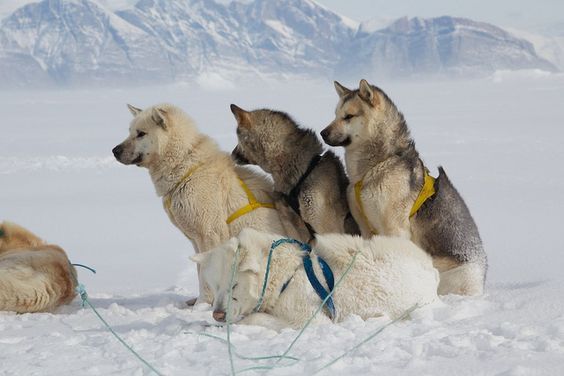Dog / Detail
Nordic Dogs: A Frozen Frontier of Canine Diversity
Jonathan Bennet | 02 September 2024 | 18:05
The Nordic region, encompassing countries like Norway, Sweden, Denmark, Finland, and Iceland, is characterized by its harsh, often frozen landscapes. This extreme environment has shaped the lives of its inhabitants, as well as the dogs that have accompanied them for centuries.
The Nordic dogs, often referred to as "Northern breeds," have evolved to thrive in these challenging conditions, developing unique physical attributes and temperaments.
The Nordic dogs are a testament to the incredible adaptability of the canine species. Their evolution in the harsh conditions of the North has resulted in a fascinating group of breeds with distinctive characteristics. Whether you are a fan of sled dogs, herding dogs, or hunting dogs, there is a Nordic breed that will capture your heart.

Nordic dogs share several common traits that have enabled them to survive in the North:
- Thick coats: Their double coats, consisting of a dense undercoat and a waterproof outer coat, protect them from the cold and wet conditions.
- Large paws: Their large paws, with thick pads, provide excellent traction on snow and ice.
- Endurance: Nordic dogs are known for their incredible endurance, allowing them to travel long distances in harsh weather.
- Intelligence: They are highly intelligent and trainable, making them valuable working dogs.
The Five Major Nordic Breeds

- Siberian Husky: Originating from Siberia, the Siberian Husky is a powerful and agile breed known for its distinctive markings and friendly demeanor. They were originally used to pull sleds across vast distances in harsh winter conditions.
- Alaskan Malamute: Similar to the Siberian Husky, the Alaskan Malamute is another sled dog breed that hails from Alaska. They are known for their immense strength and loyalty.
- Samoyed: The Samoyed, with its white, fluffy coat, is a friendly and playful breed that originated from the Samoyeds of Siberia. They were traditionally used as herding dogs and sled dogs.
- Greenland Dog: The Greenland Dog is a large, hardy breed that is native to Greenland. They are known for their incredible endurance and ability to survive in extreme conditions.
- Finnish Spitz: Unlike the other breeds on this list, the Finnish Spitz is not a sled dog. Instead, it is a hunting dog that was originally bred to hunt small game in Finland. It is characterized by its distinctive red coat and fox-like features.

The history of Nordic dogs is closely tied to the history of human migration in the region. As people migrated to the North, they brought their dogs with them, leading to the development of new breeds and the crossbreeding of existing ones.
This has resulted in a rich and diverse tapestry of Nordic dog breeds.

Today, Nordic dogs are popular pets around the world. Their striking appearance, friendly nature, and unique abilities make them a desirable choice for many dog lovers. While they are often associated with cold climates, they can also thrive in warmer regions with proper care.
Related
-

The Healing Power of Dogs: How Canine Therapy is Revolutionizing Mental Health and Boosting Positive Energy in Humans
Dog14 November 2024
-

A Pawsitive History: Dogs of Nuremberg
Dog09 November 2024
-

The Role of Oxytocin in the Human-Dog Bond: The Science Behind Our Deep Connection
Dog06 November 2024
-

Beyond the Beach: Jamaica's Dog Lovers
Dog29 October 2024
-

A Dog's Delights: Homemade Snacks for Our Furry Babies, Recipes Included!
Dog29 October 2024
-

A Dog's Disorientation: Understanding Your Dogs' Wanderlust
Dog29 October 2024
Popular
-

-

A Pawsitive History: Dogs of Nuremberg
09 November 2024 -

-

Beyond the Beach: Jamaica's Dog Lovers
29 October 2024 -
